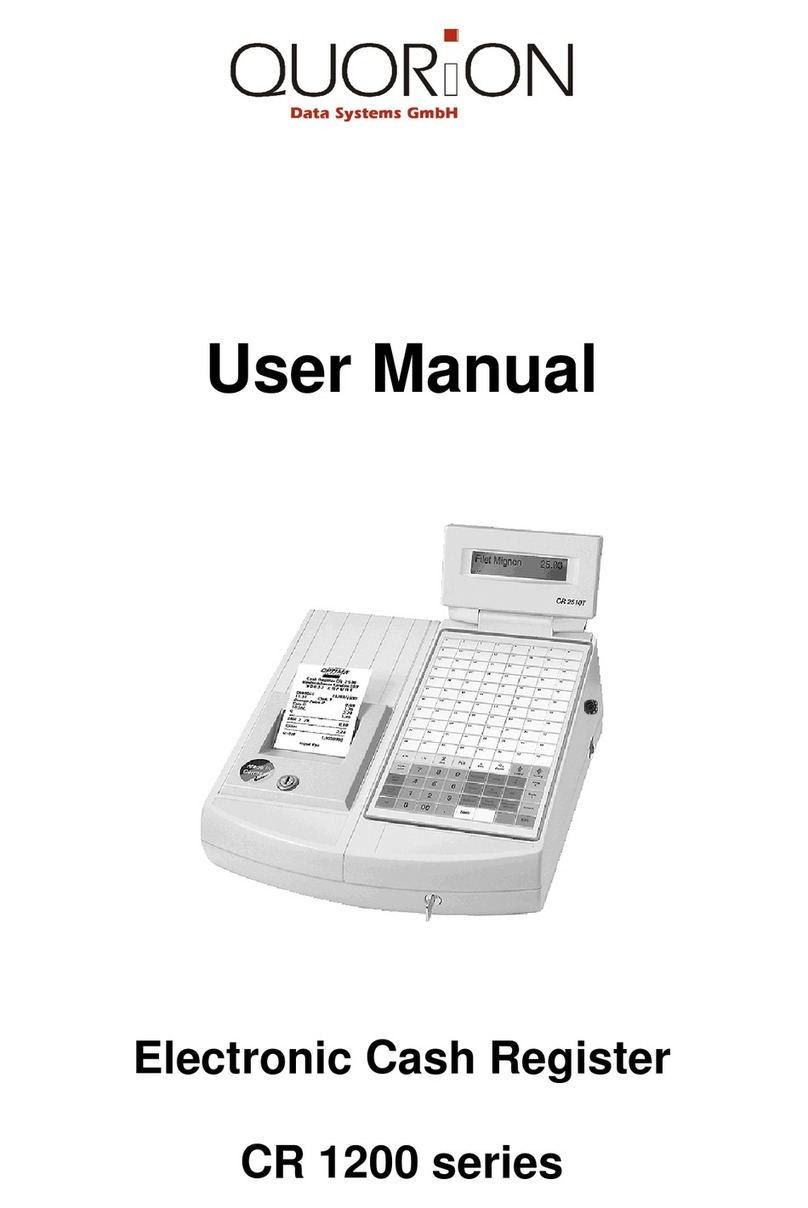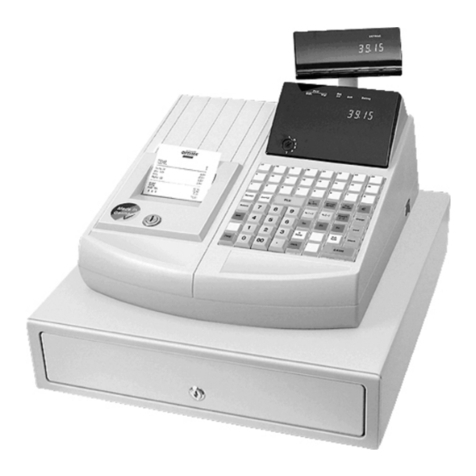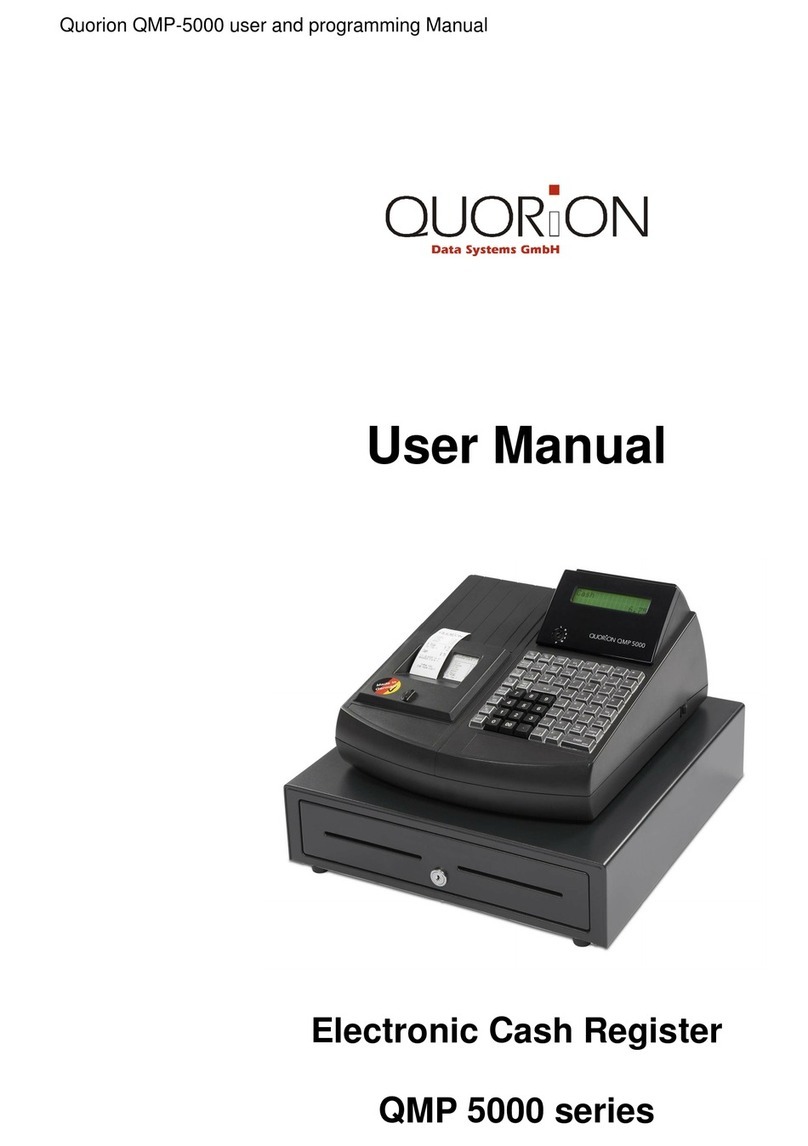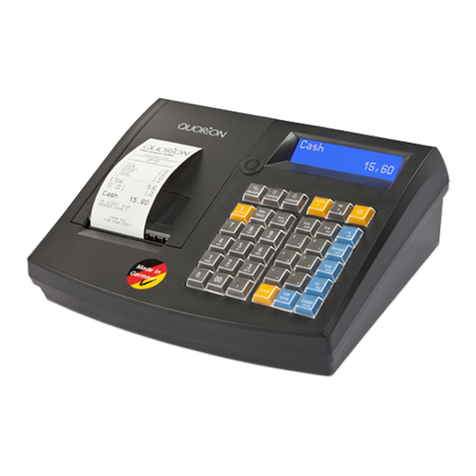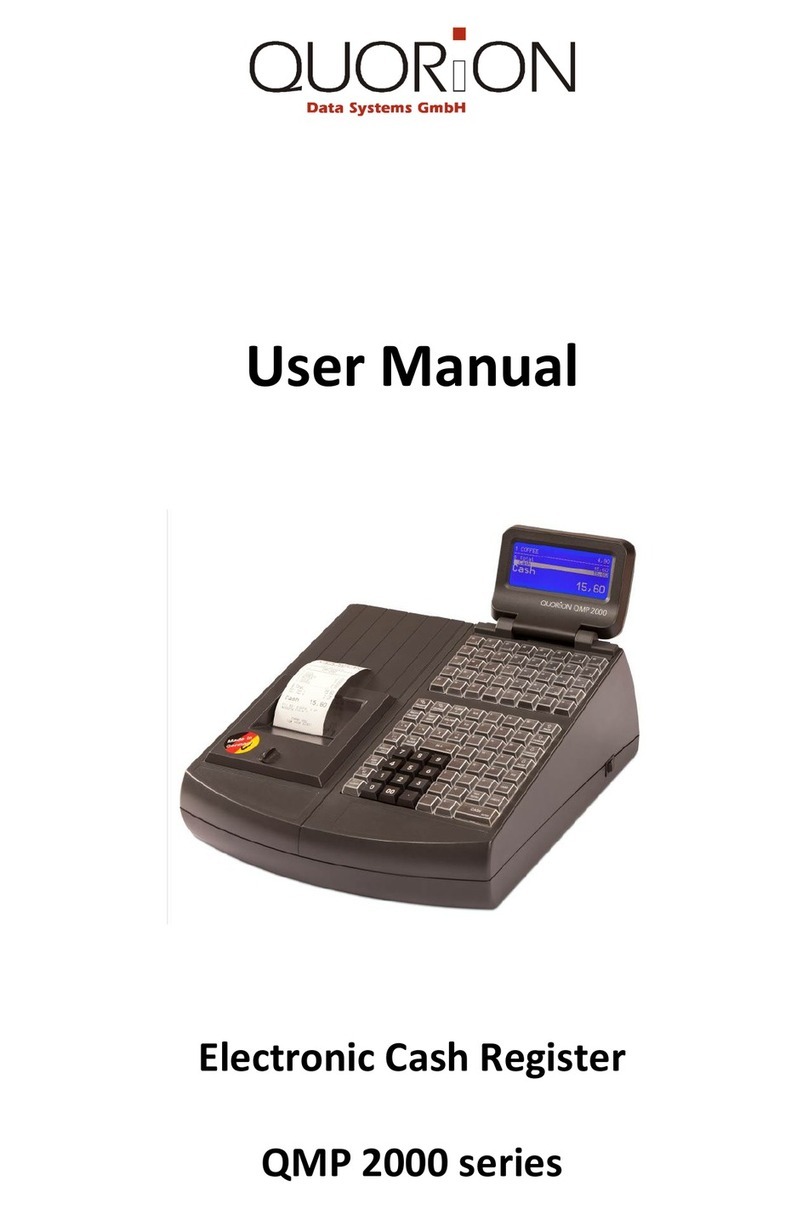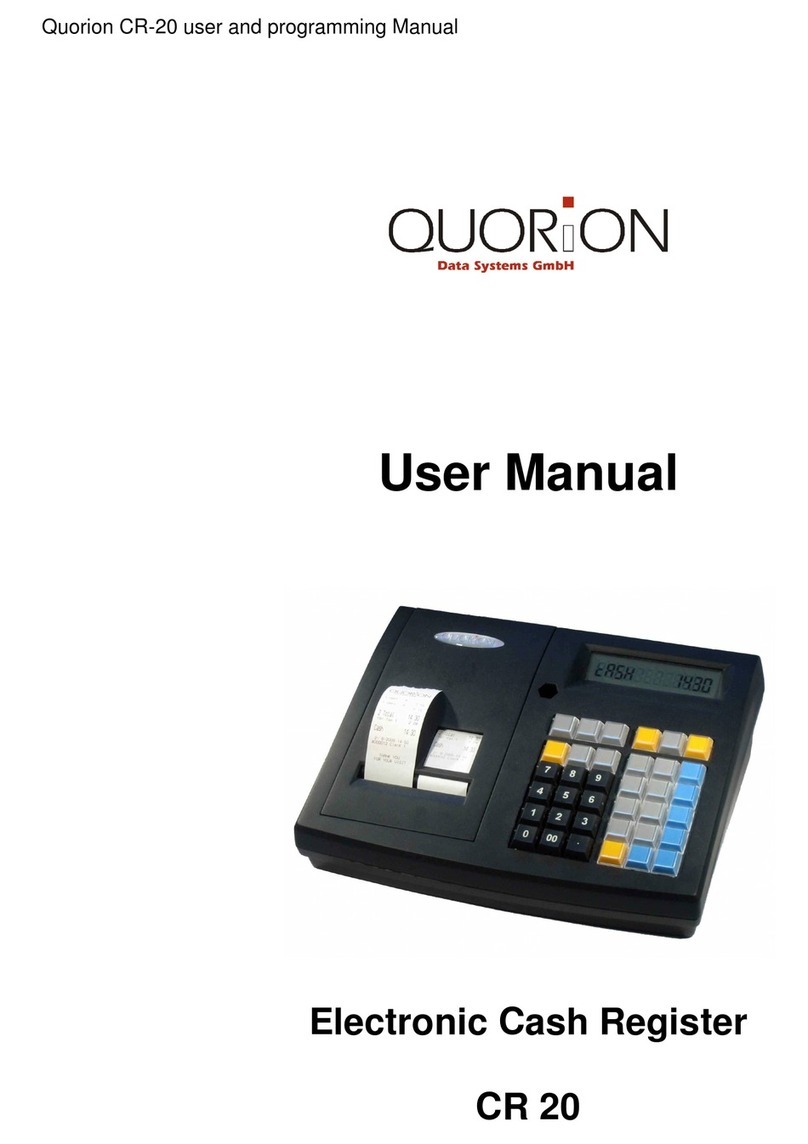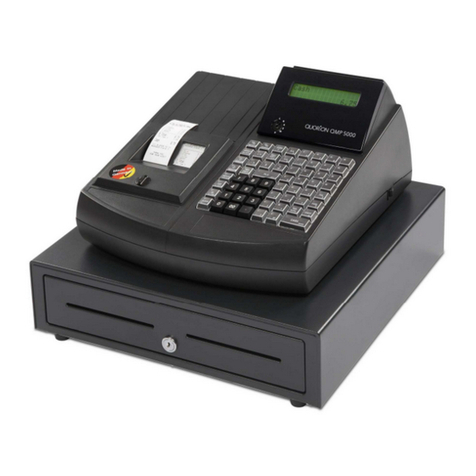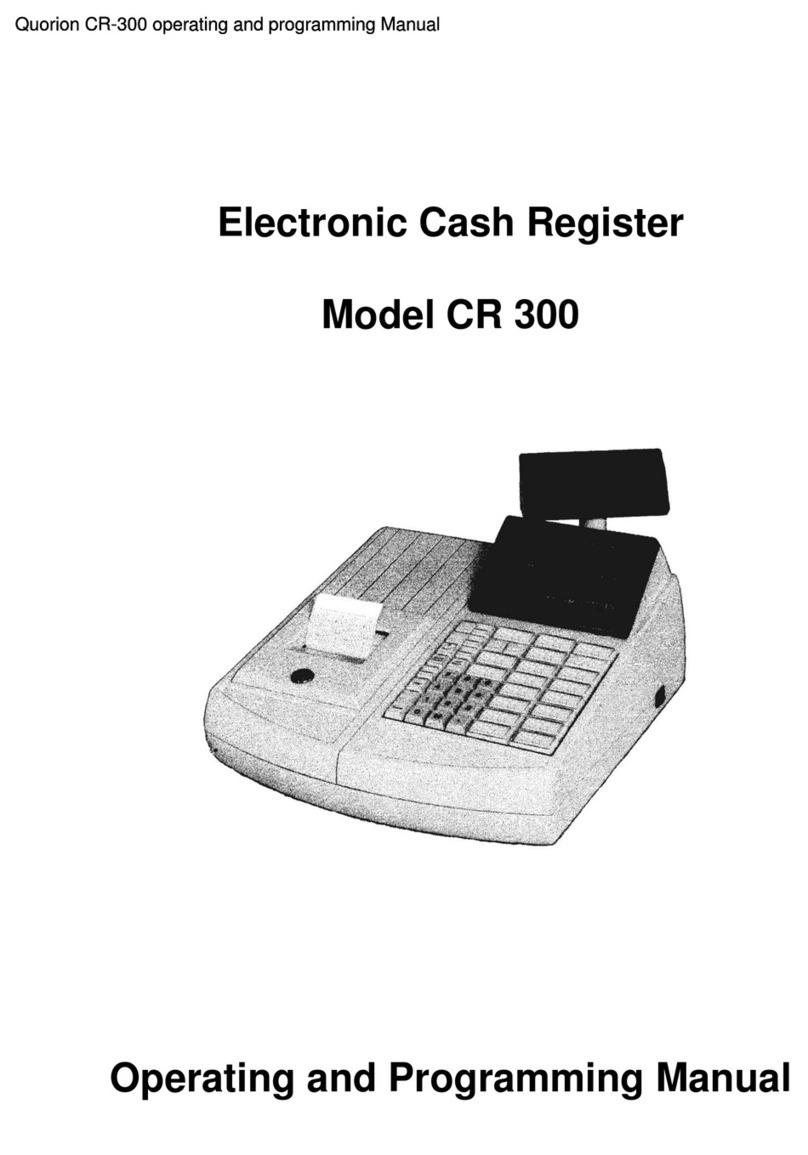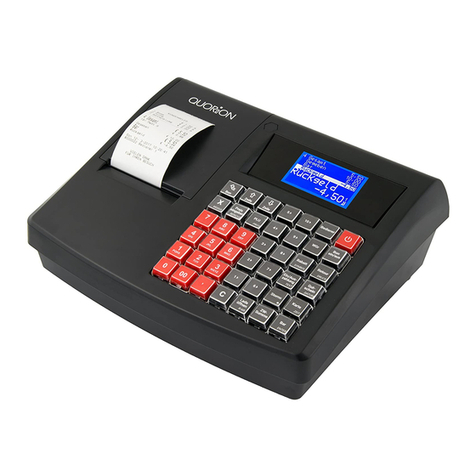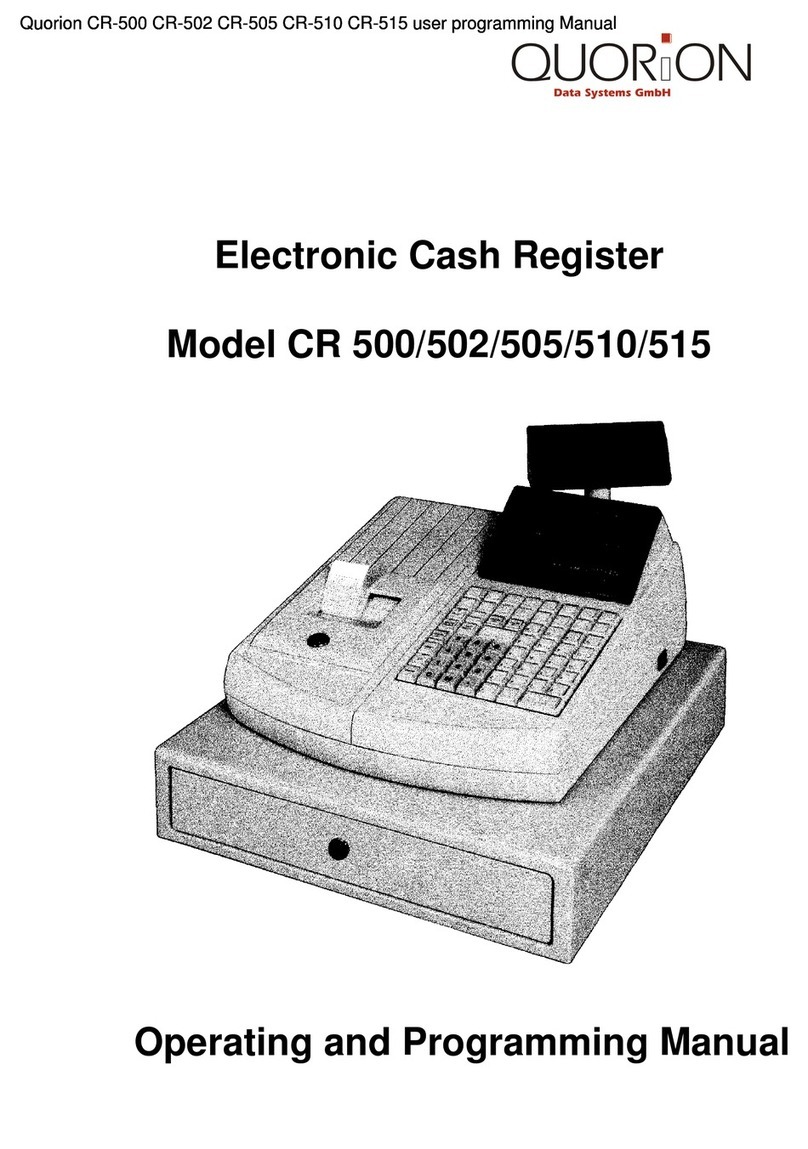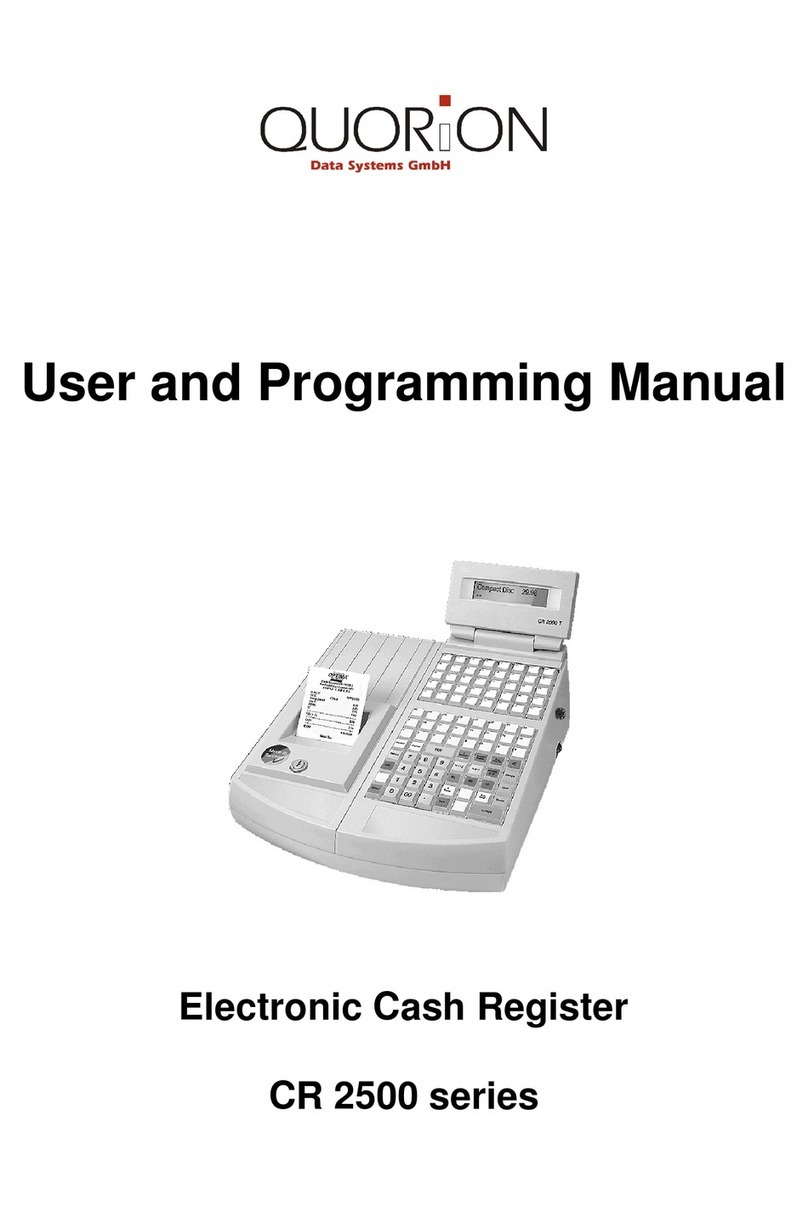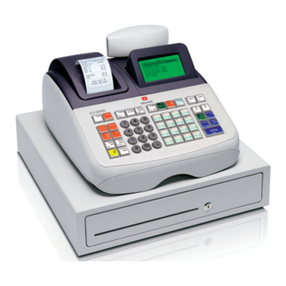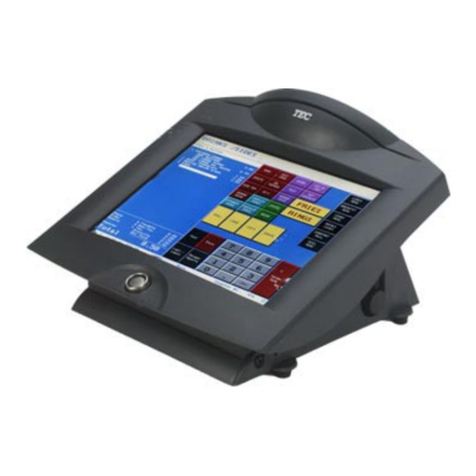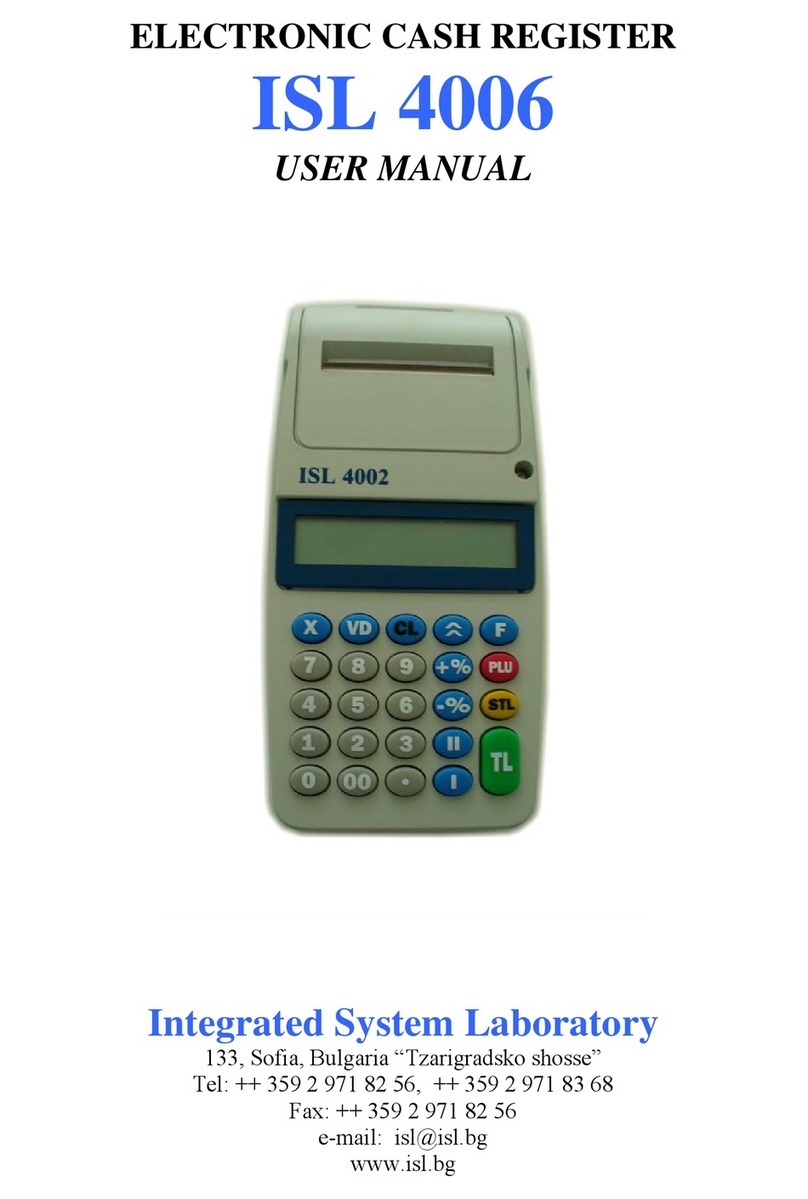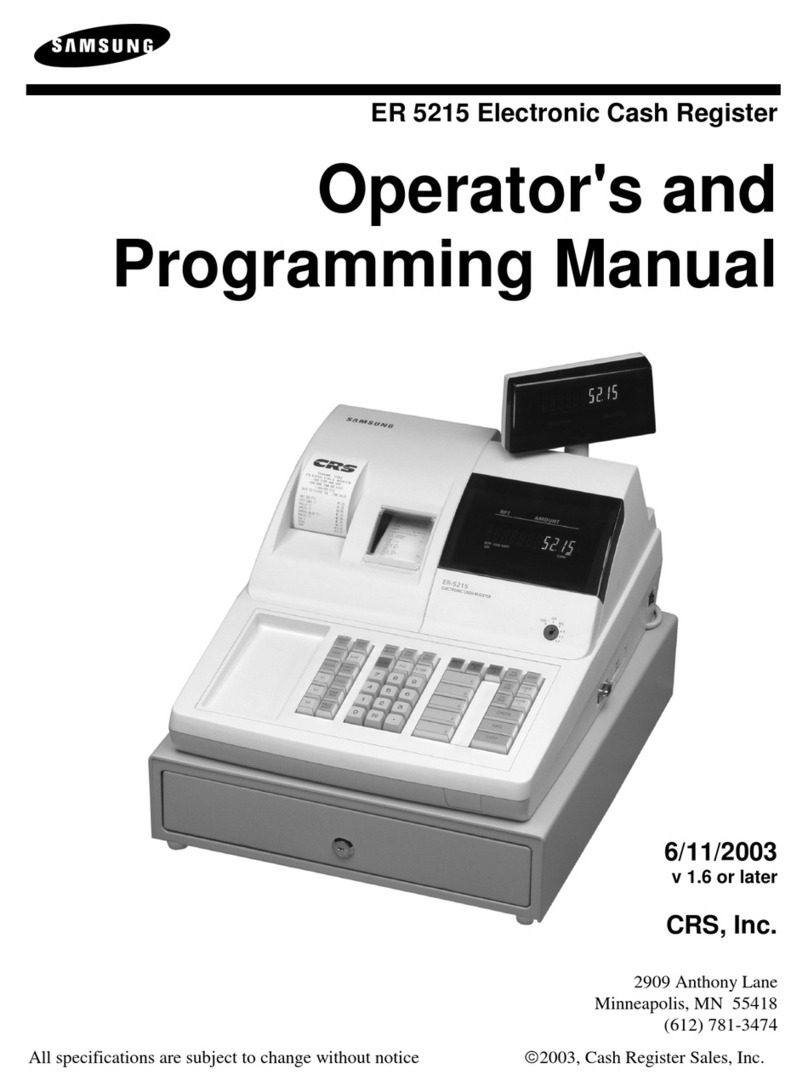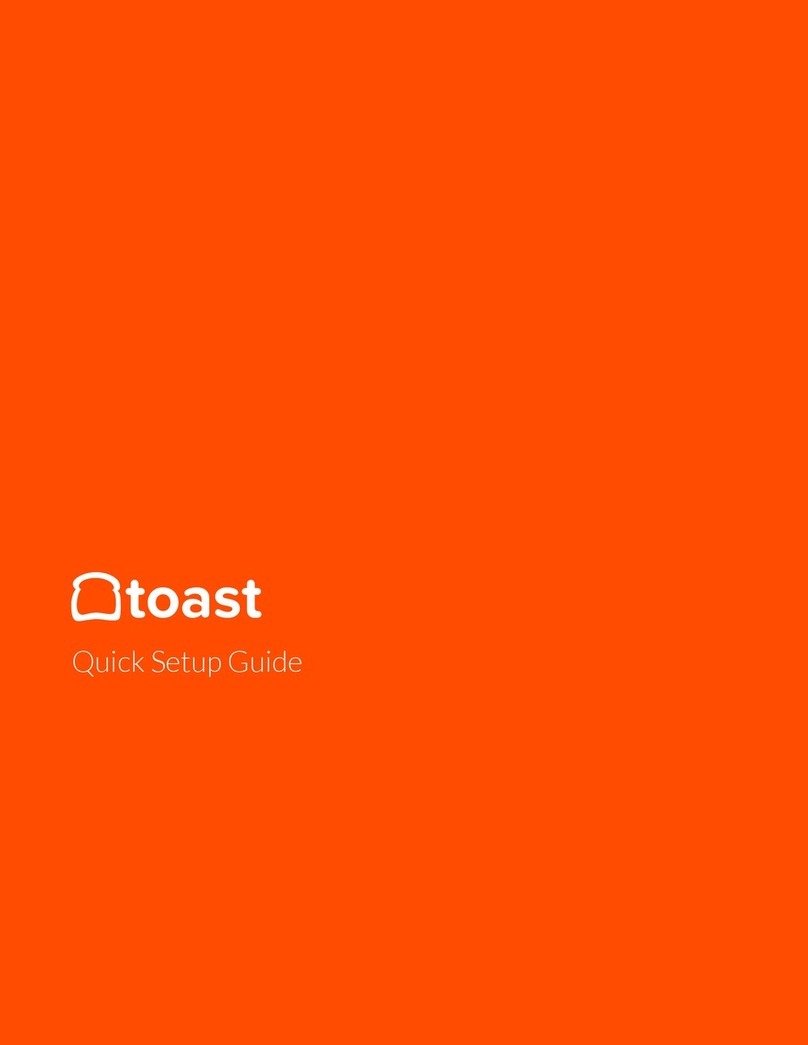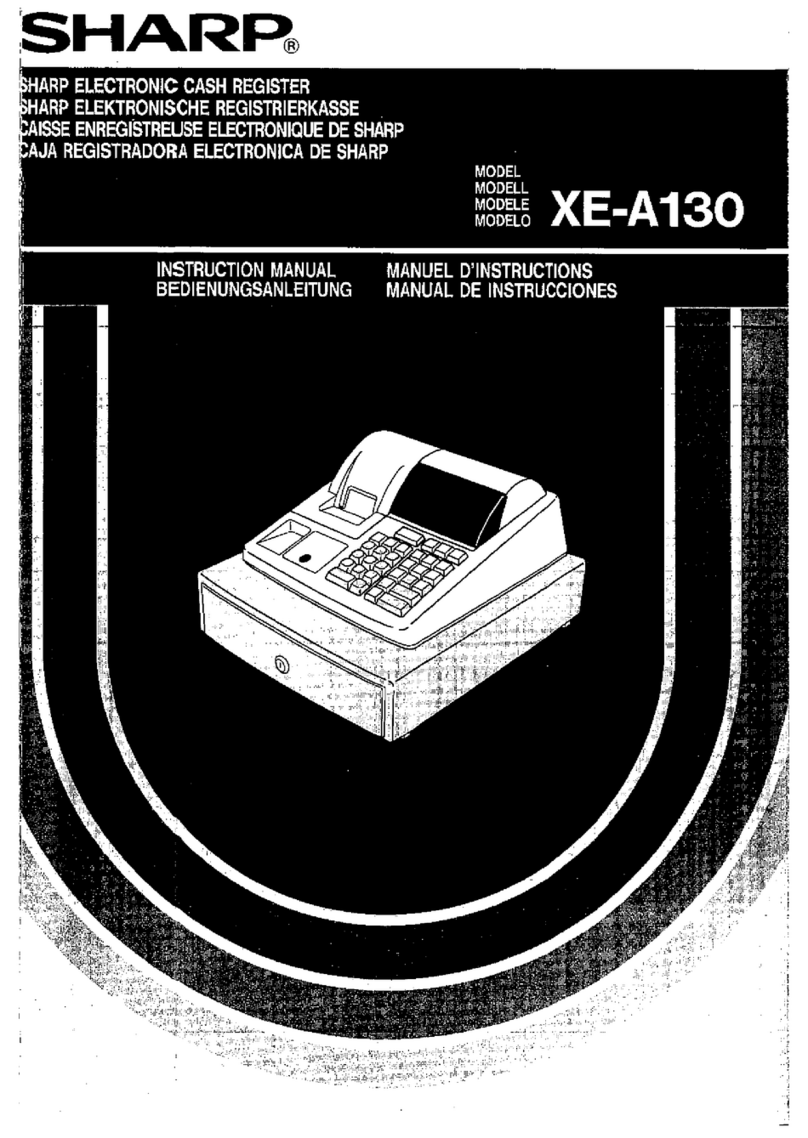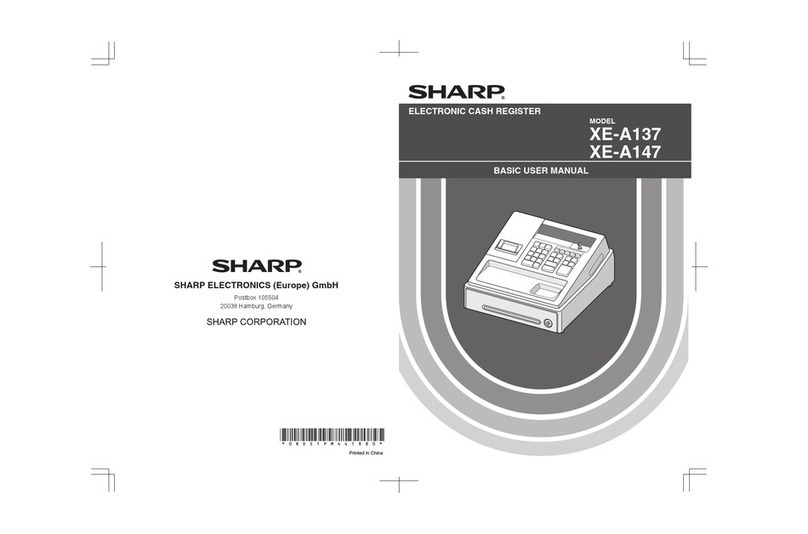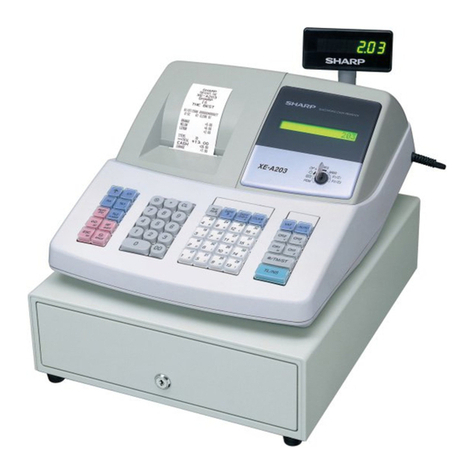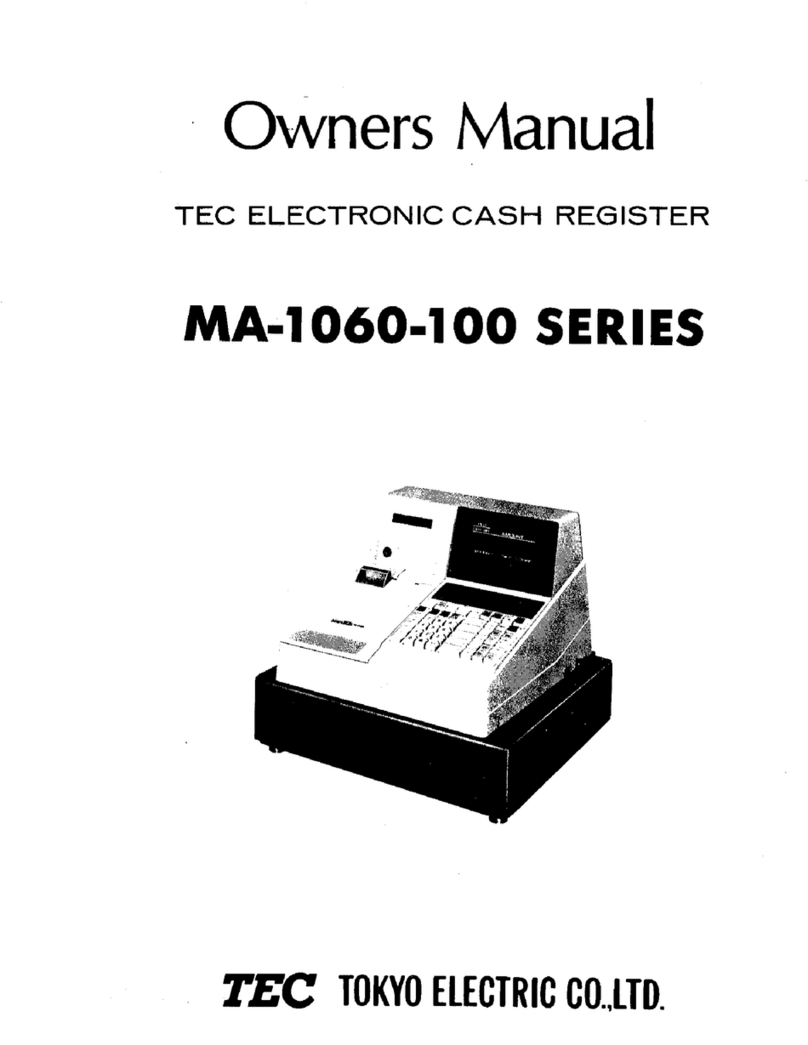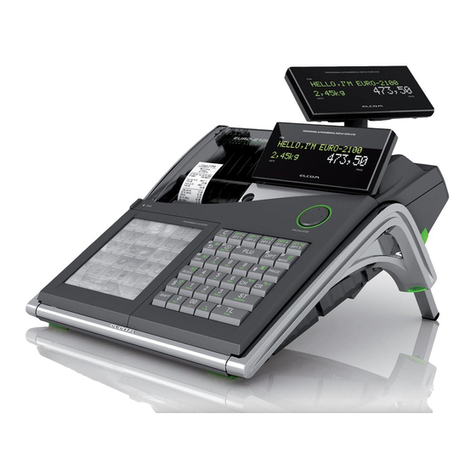3
Index
1. Safety Precautions .................................................................................. 5
2. General information................................................................................. 6
2.1 Technical data.......................................................................................................................6
2.2 Components..........................................................................................................................7
2.3 Thermal printer......................................................................................................................8
2.3.1 Paper Insertion.................................................................................................................8
2.4 Switch ON / OFF cash register.............................................................................................9
2.4.1 Operating modes..............................................................................................................9
2.5 Interfaces.............................................................................................................................10
2.5.1 Pin Assignment..............................................................................................................10
2.5.2 Connection to PC ...........................................................................................................11
2.5.3 Adapter Cable for RS232................................................................................................12
2.6 Keyboard .............................................................................................................................13
2.6.1 Names of Keys and Their Function...............................................................................13
3. Getting Started....................................................................................... 15
4. Sign in and Register.............................................................................. 15
4.1 Sign in a Clerk/Sales Person..............................................................................................15
4.2 Register a Department........................................................................................................16
4.3 Register Pre-Programmed PLU’s.......................................................................................16
4.4 Enter a New Price................................................................................................................16
4.5 Create a PLU during the Sale.............................................................................................17
4.6 Multiplication/Division ........................................................................................................18
4.7 Holding a Sale .....................................................................................................................19
4.8 Tendering in Local Currency..............................................................................................19
4.9 Tendering in Foreign Currency..........................................................................................20
4.10 Receipt On/Off and Receipt Copy....................................................................................20
4.11 Time and Date....................................................................................................................20
4.12 No Sale / Open Drawer......................................................................................................20
5. Corrections ............................................................................................ 21
5.1 Clearing of Inputs and Error Messages.............................................................................21
5.2 Error correction...................................................................................................................21
5.3 Void Function......................................................................................................................21
5.4 Refund..................................................................................................................................22
5.5 Transaction Refund.............................................................................................................22
5.6 Transaction Cancel.............................................................................................................23
5.7 Tender Correction...............................................................................................................23
6. Discounts, RA and PO........................................................................... 23
6.1 Percentage Discount/Surcharge........................................................................................23
6.2 Amount Discount/Surcharge..............................................................................................24
6.3 Received on Account / Paid Out ........................................................................................24
7. Using Shift Levels.................................................................................. 25
7.1 PLU/Department Shift.........................................................................................................25
7.2 Price Shift............................................................................................................................25
7.3 Tax Shift...............................................................................................................................25
